TensorFlow Developer 筆記
DeepLearning.AI TensorFlow Developer 专业证书 (總課程連結)
Introduction to TensorFlow for Artificial Intelligence, Machine Learning, and Deep Learning
Convolutional Neural Networks in TensorFlow
Natural Language Processing in TensorFlow
Sequences, Time Series and Prediction
Introduction to TensorFlow for Artificial Intelligence, Machine Learning, and Deep Learning
Week 1 A New Programming Paradigm
Before you begin: TensorFlow 2.0 and this course
Introduction: A conversation with Andrew Ng
A primer in machine learning
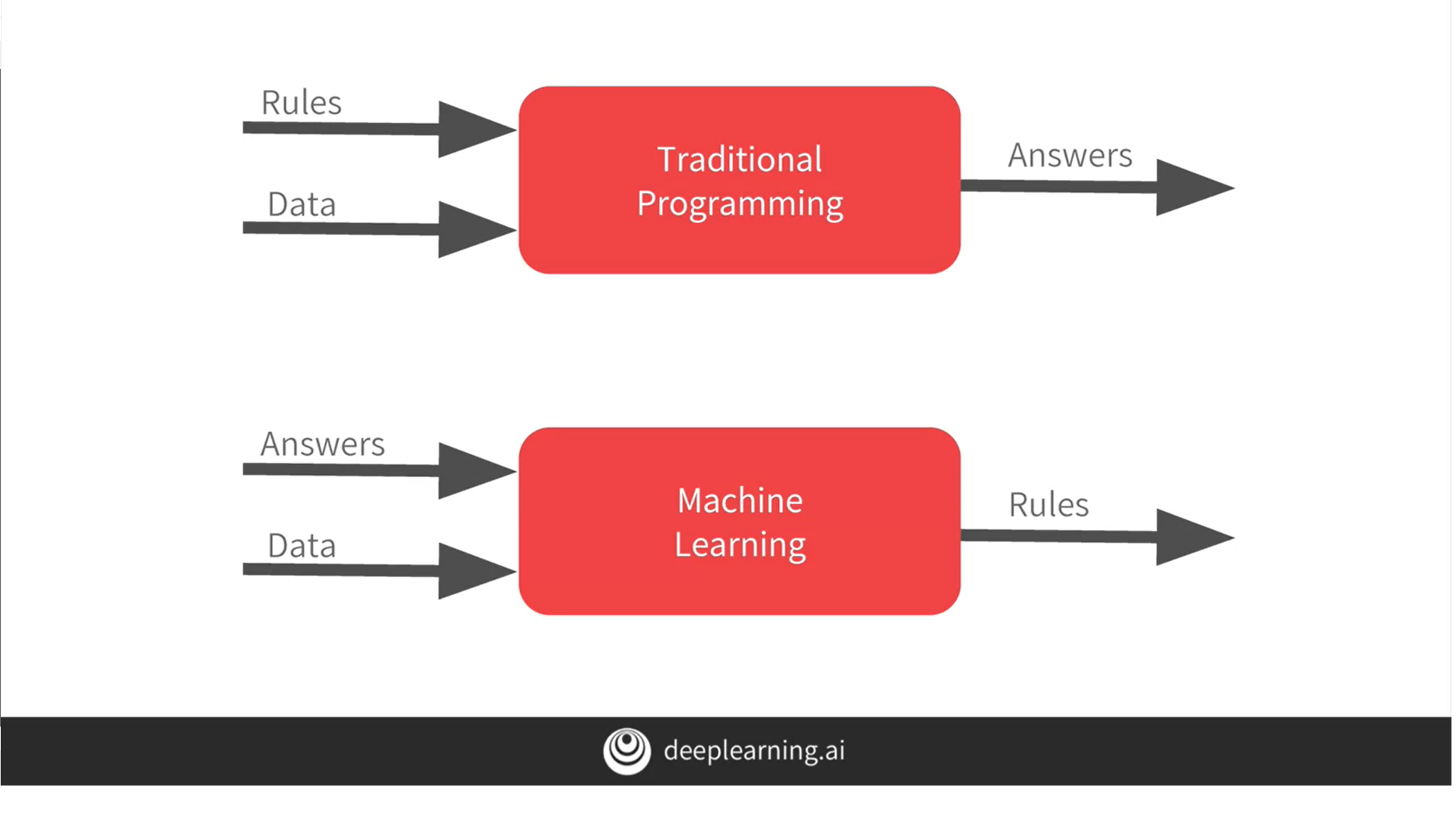
The ‘Hello World’ of neural networks
1 | import tensorflow as tf |
From rules to data
Working through ‘Hello World’ in TensorFlow and Python
Try it for yourself
GitHub Course 1 - Part 2 - Lesson 2 - Notebook.ipynb
Colab Course 1 - Part 2 - Lesson 2 - Notebook.ipynb
Week 1 Quiz (升級後提交)
Weekly Exercise - Your First Neural Network
Introduction to Google Colaboratory
Get started with Google Colaboratory (Coding TensorFlow) - YouTube
Exercise 1 (Housing Prices) (升級後提交)
编程作业: Exercise 1 (Housing Prices) (升級後提交)
Week 1 Resources
Optional: Ungraded Google Colaboratory environment
Exercise 1 (Housing Prices)
Colab Exercise_1_House_Prices_Question.ipynb
Week 2 Introduction to Computer Vision
A Conversation with Andrew Ng
An Introduction to computer vision
Exploring how to use data
Writing code to load training data
The structure of Fashion MNIST data
Coding a Computer Vision Neural Network
See how it’s done
Walk through a Notebook for computer vision
Get hands-on with computer vision
Colab Course 1 - Part 4 - Lesson 2 - Notebook.ipynb
1 | import tensorflow as tf |
Using Callbacks to control training

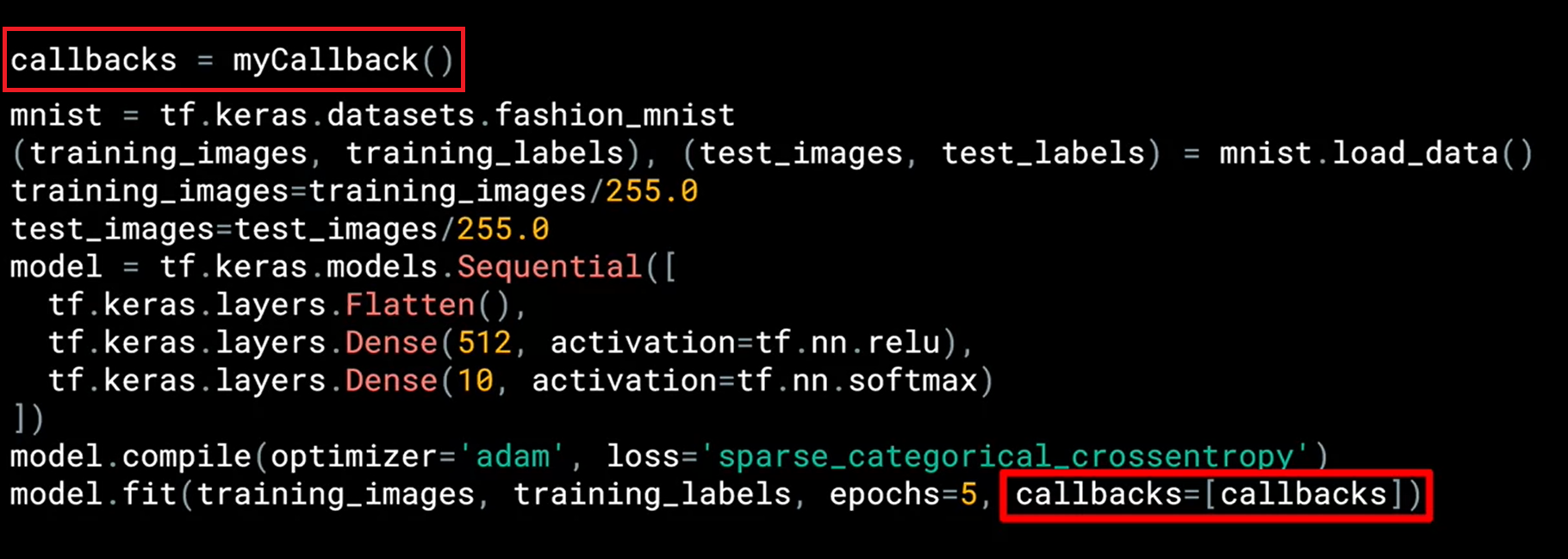
See how to implement Callbacks
Colab Course 1 - Part 4 - Lesson 4 - Notebook.ipynb
1 | import tensorflow as tf |
Walk through a notebook with Callbacks
Week 2 Quiz (升級後提交)
Exercise 2 (Handwriting Recognition) (购买订阅以解锁此项目。)
编程作业: Exercise 2 (升級後提交)
Weekly Exercise - Implement a Deep Neural Network to recognize handwritten digits
Week 2 Resources
Beyond Hello, World - A Computer Vision Example
Exercise 2 - Handwriting Recognition - Answer
Optional: Ungraded Google Colaboratory environment
Exercise 2 (Handwriting Recognition)
Colab Exercise2-Question.ipynb
Week 3 Enhancing Vision with Convolutional Neural Networks
A conversation with Andrew Ng
What are convolutions and pooling?
Coding convolutions and pooling layers
tf.keras.layers.Conv2D
tf.keras.layers.MaxPool2D
Implementing convolutional layers
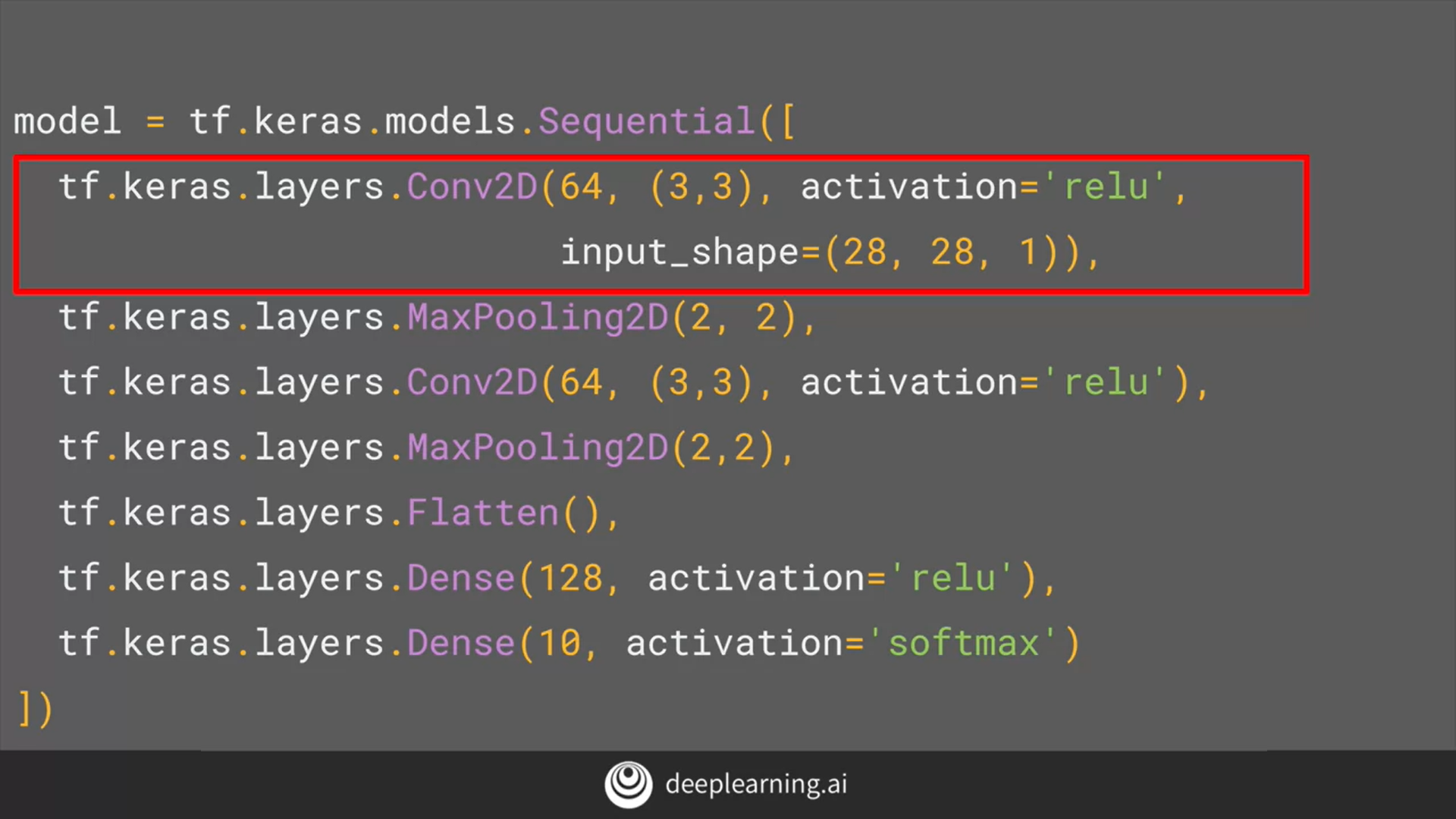
- 64 個 3*3 的 filter
- beyond the scope of this class
- they aren’t random. They start with a set of known good filters in a similar way to the pattern fitting that you saw earlier
- relu 表示負值會被丟棄
- 1 表示顏色為灰階
- For more details on convolutions and how they work, there’s a great set of resources here.

Learn more about convolutions
Convolutional Neural Networks playlist
Implementing pooling layers
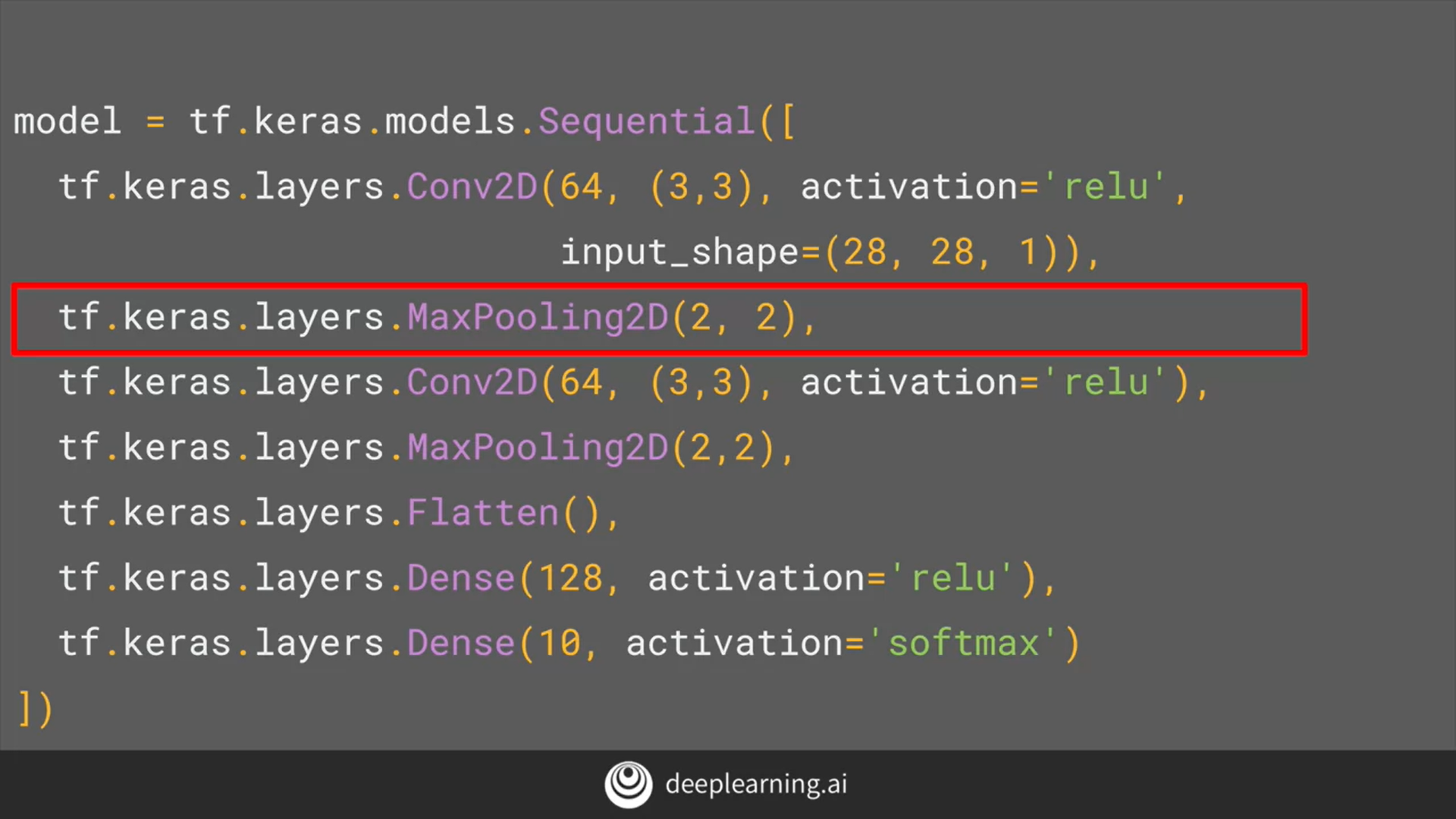

28->26
13->11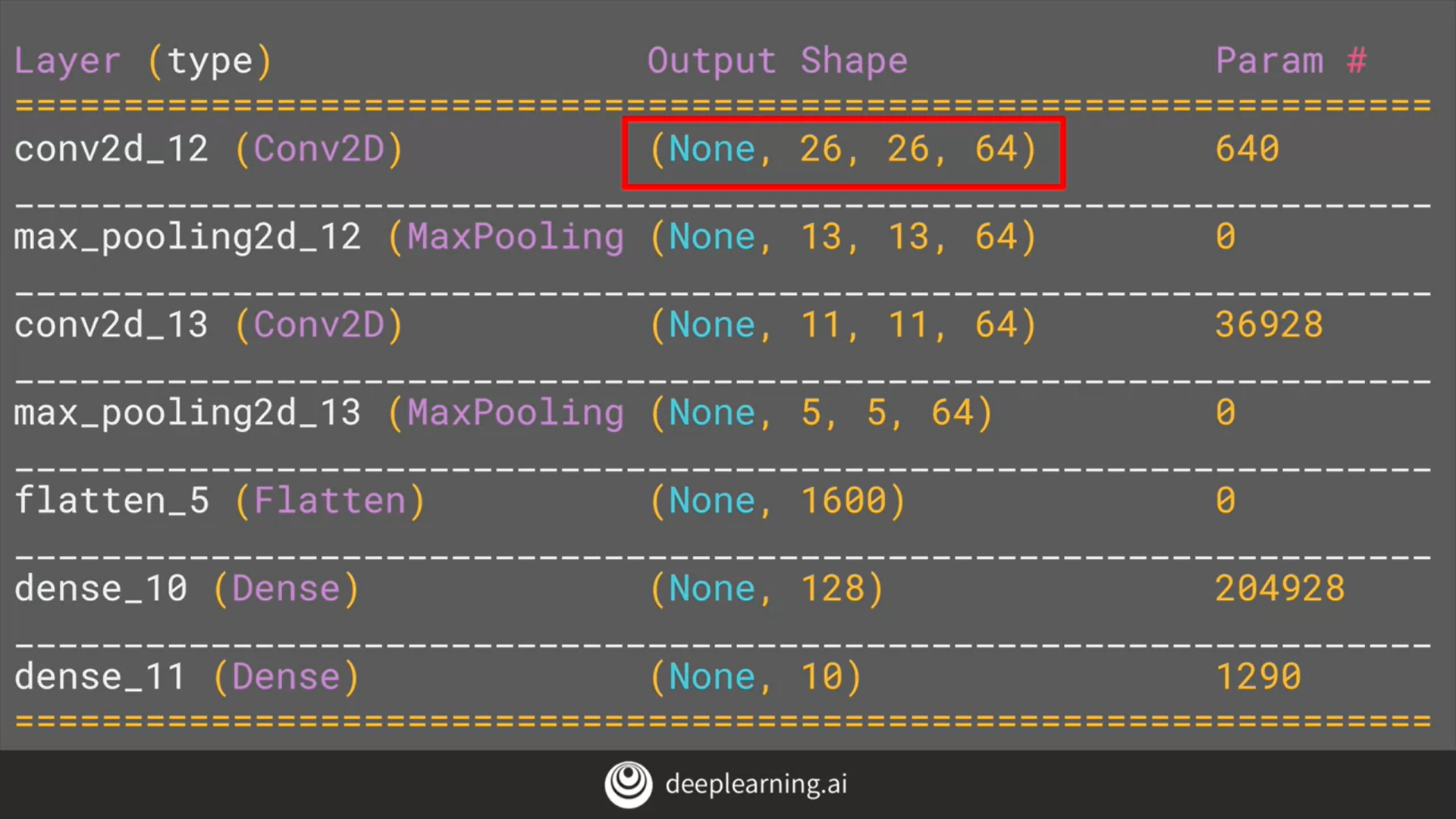
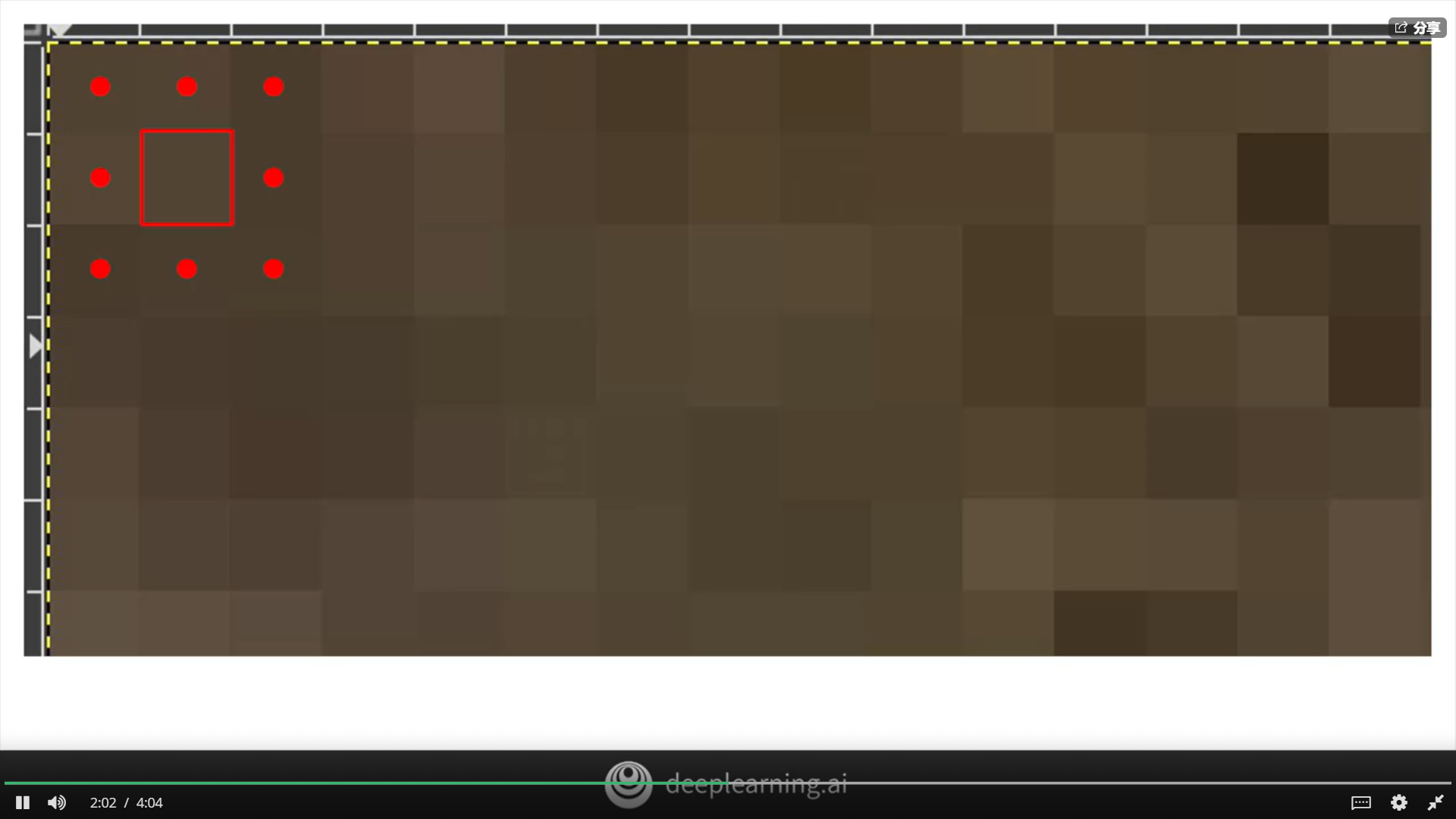
Getting hands-on, your first ConvNet
Improving the Fashion classifier with convolutions
Try it for yourself
Colab Course 1 - Part 6 - Lesson 2 - Notebook.ipynb
Walking through convolutions
Experiment with filters and pools
Colab Course 1 - Part 6 - Lesson 3 - Notebook.ipynb
Lode’s Computer Graphics Tutorial Image Filtering
Week 3 Quiz (升級後提交)
Weekly Exercise - Improving DNN Performance using Convolutions
Exercise 3 (Improve MNIST with convolutions) 购买订阅以解锁此项目。
编程作业: Exercise 3 (Improve MNIST with convolutions)) (升級後提交)
Week 3 Resources
Adding Convolutions to Fashion MNIST
Exploring how Convolutions and Pooling work
Optional: Ungraded Google Colaboratory environment
Exercise 3 - Improve MNIST with convolutions
(未完待續)


